Filipa Peleja
Using Machine Learning Methods for Automation of Size Grid Building and Management
Jun 16, 2023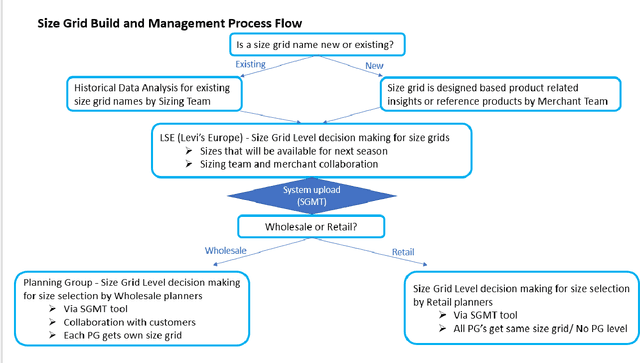
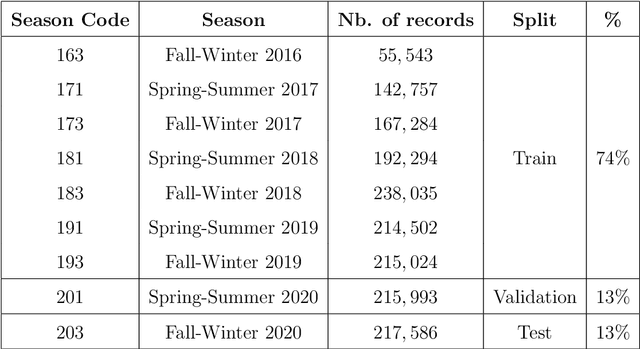


Abstract:Fashion apparel companies require planning for the next season, a year in advance for supply chain management. This study focuses on size selection decision making for Levi Strauss. Currently, the region and planning group level size grids are built and managed manually. The company suffers from the workload it creates for sizing, merchant and planning teams. This research is aiming to answer two research questions: "Which sizes should be available to the planners under each size grid name for the next season(s)?" and "Which sizes should be adopted for each planning group for the next season(s)?". We approach to the problem with a classification model, which is one of the popular models used in machine learning. With this research, a more automated process was created by using machine learning techniques. A decrease in workload of the teams in the company is expected after it is put into practice. Unlike many studies in the state of art for fashion and apparel industry, this study focuses on sizes where the stock keeping unit represents a product with a certain size.
Fashion Object Detection for Tops & Bottoms
May 29, 2023

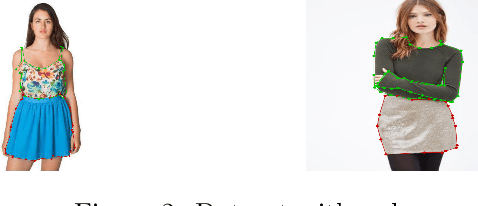
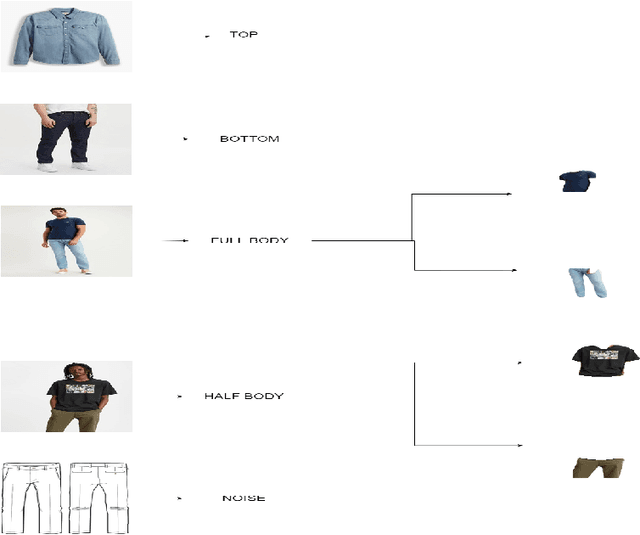
Abstract:Fashion is one of the largest world's industries and computer vision techniques have been becoming more popular in recent years, in particular, for tasks such as object detection and apparel segmentation. Even with the rapid growth in computer vision solutions, specifically for the fashion industry, many problems are far for being resolved. Therefore, not at all times, adjusting out-of-the-box pre-trained computer vision models will provide the desired solution. In the present paper is proposed a pipeline that takes a noisy image with a person and specifically detects the regions with garments that are bottoms or tops. Our solution implements models that are capable of finding human parts in an image e.g. full-body vs half-body, or no human is found. Then, other models knowing that there's a human and its composition (e.g. not always we have a full-body) finds the bounding boxes/regions of the image that very likely correspond to a bottom or a top. For the creation of bounding boxes/regions task, a benchmark dataset was specifically prepared. The results show that the Mask RCNN solution is robust, and generalized enough to be used and scalable in unseen apparel/fashion data.
Human Body Shape Classification Based on a Single Image
May 29, 2023



Abstract:There is high demand for online fashion recommender systems that incorporate the needs of the consumer's body shape. As such, we present a methodology to classify human body shape from a single image. This is achieved through the use of instance segmentation and keypoint estimation models, trained only on open-source benchmarking datasets. The system is capable of performing in noisy environments owing to to robust background subtraction. The proposed methodology does not require 3D body recreation as a result of classification based on estimated keypoints, nor requires historical information about a user to operate - calculating all required measurements at the point of use. We evaluate our methodology both qualitatively against existing body shape classifiers and quantitatively against a novel dataset of images, which we provide for use to the community. The resultant body shape classification can be utilised in a variety of downstream tasks, such as input to size and fit recommendation or virtual try-on systems.
Recommender System for News Articles using Supervised Learning
Jul 03, 2017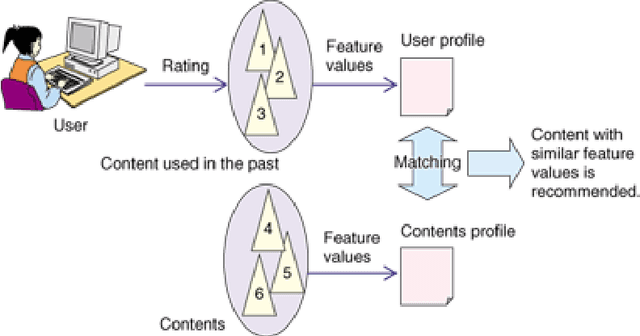
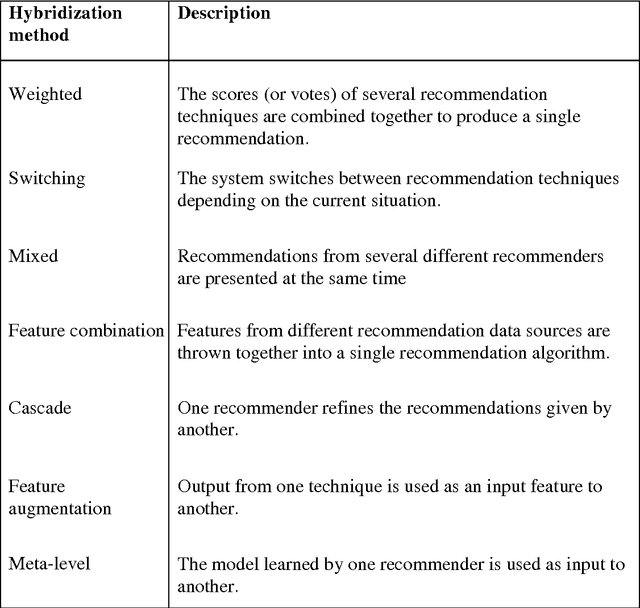
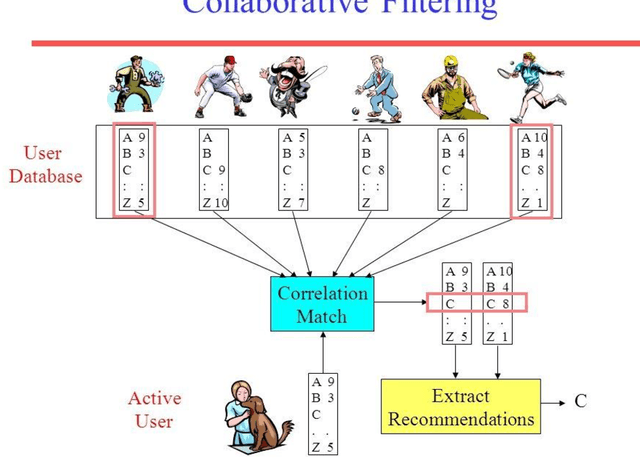
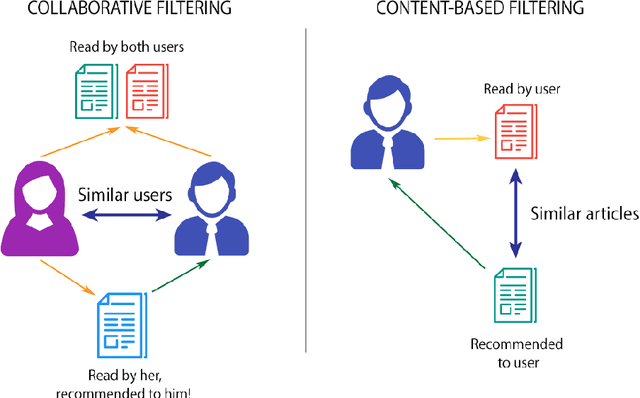
Abstract:In the last decade we have observed a mass increase of information, in particular information that is shared through smartphones. Consequently, the amount of information that is available does not allow the average user to be aware of all his options. In this context, recommender systems use a number of techniques to help a user find the desired product. Hence, nowadays recommender systems play an important role. Recommender Systems' aim to identify products that best fits user preferences. These techniques are advantageous to both users and vendors, as it enables the user to rapidly find what he needs and the vendors to promote their products and sales. As the industry became aware of the gains that could be accomplished by using these algorithms, also a very interesting problem for many researchers, recommender systems became a very active area since the mid 90's. Having in mind that this is an ongoing problem the present thesis intends to observe the value of using a recommender algorithm to find users likes by observing her domain preferences. In a balanced probabilistic method, this thesis will show how news topics can be used to recommend news articles. In this thesis, we used different machine learning methods to determine the user ratings for an article. To tackle this problem, supervised learning methods such as linear regression, Naive Bayes and logistic regression are used. All the aforementioned models have a different nature which has an impact on the solution of the given problem. Furthermore, number of experiments are presented and discussed to identify the feature set that fits best to the problem.
 Add to Chrome
Add to Chrome Add to Firefox
Add to Firefox Add to Edge
Add to Edge